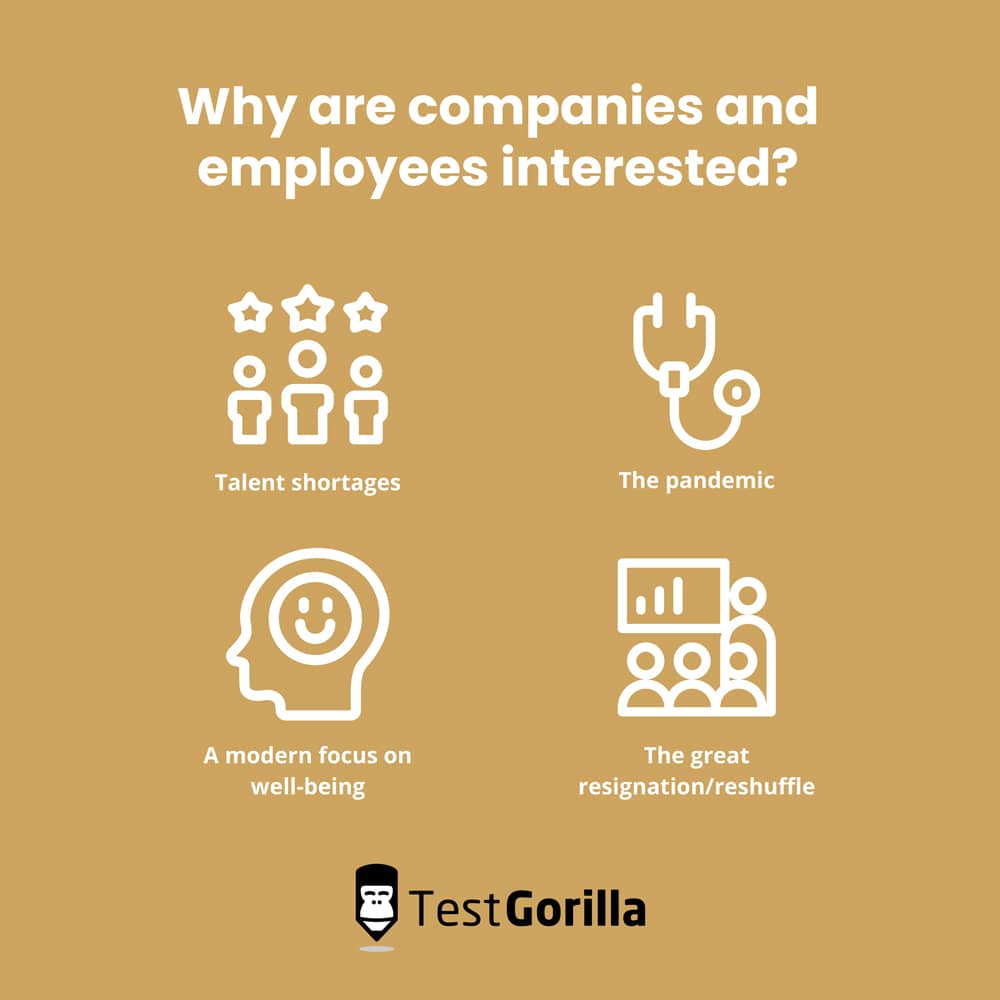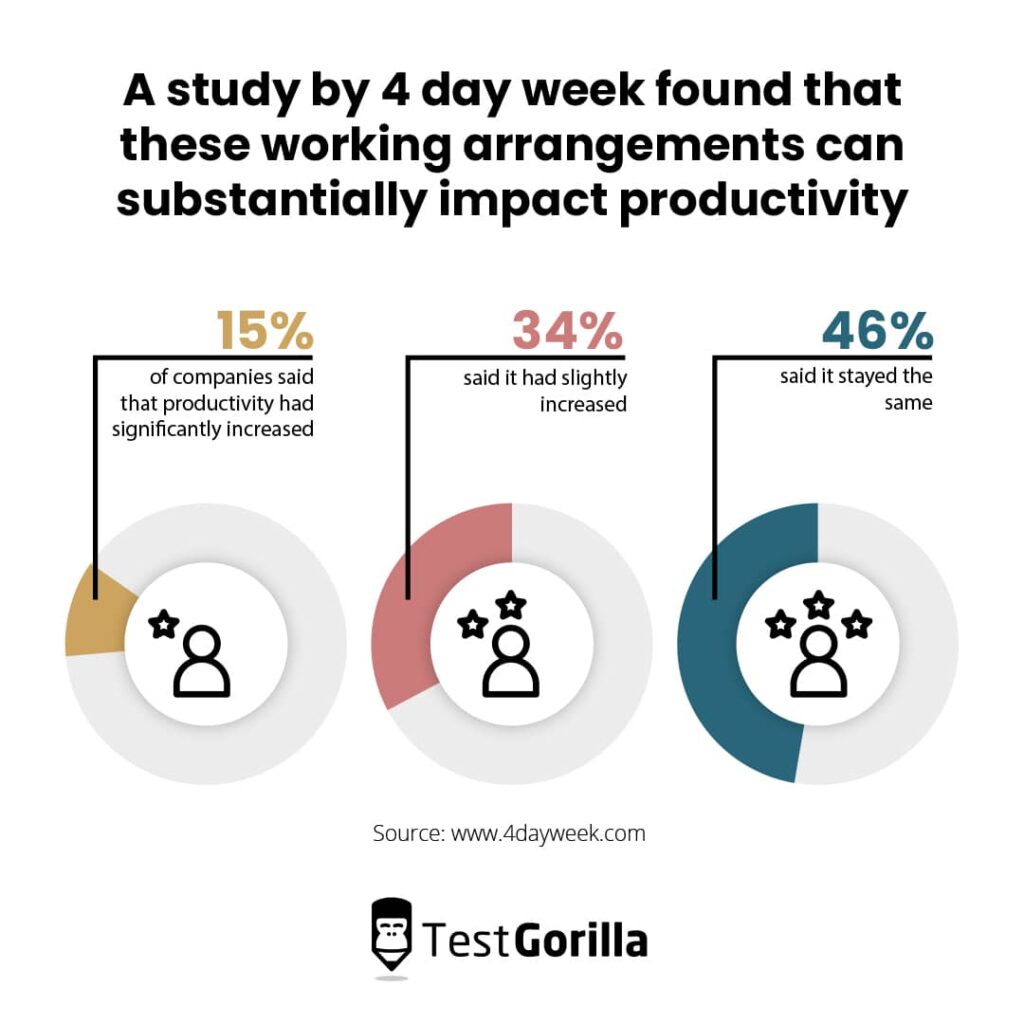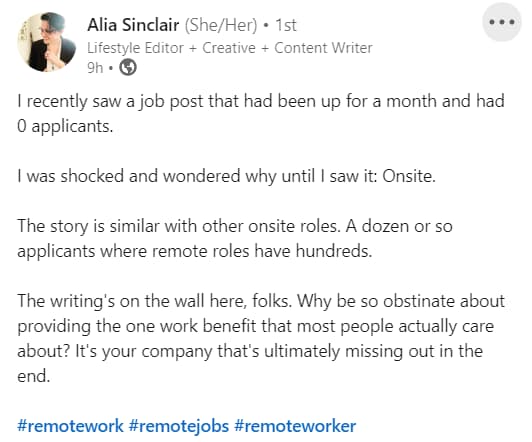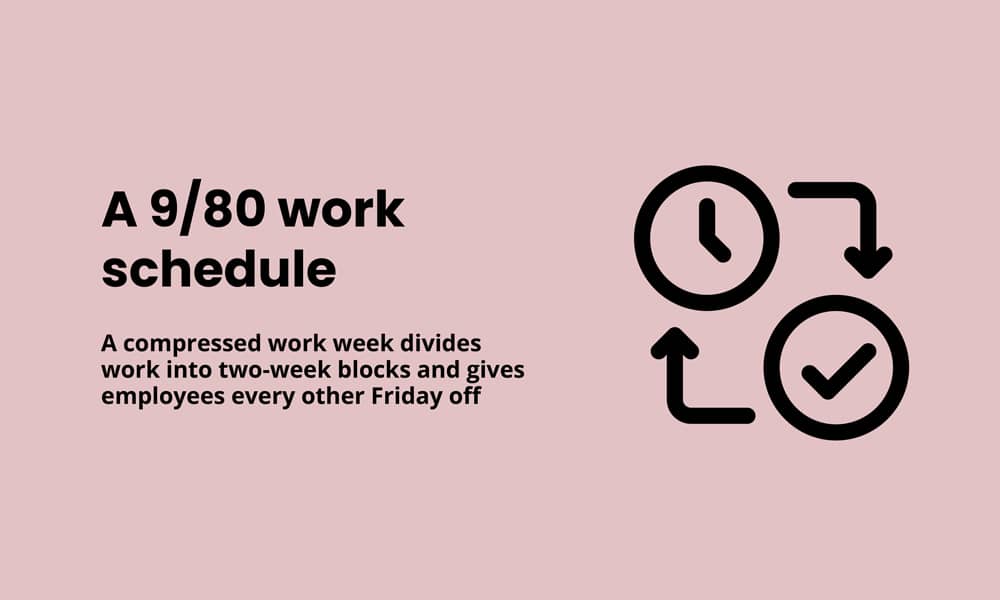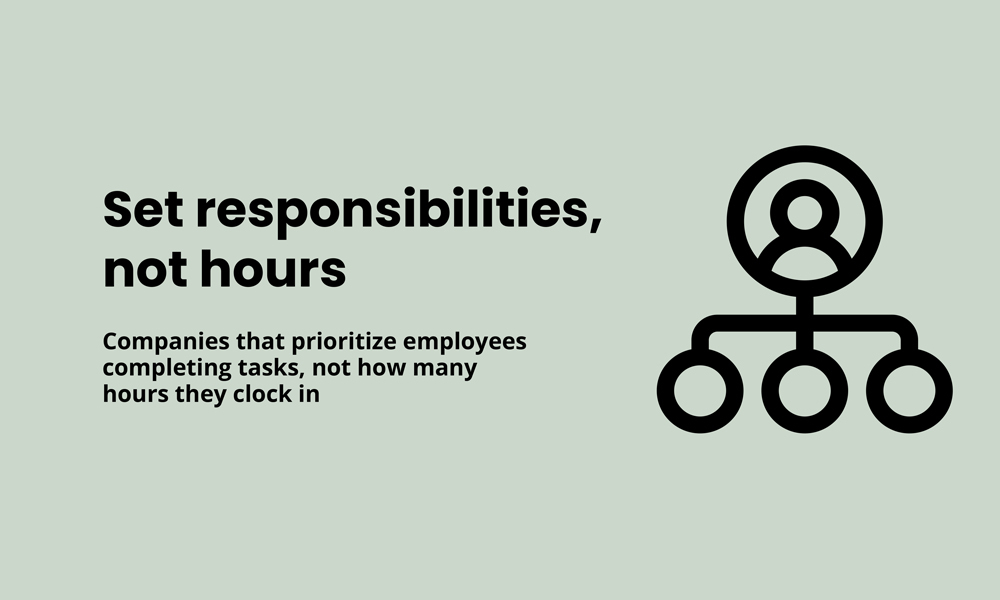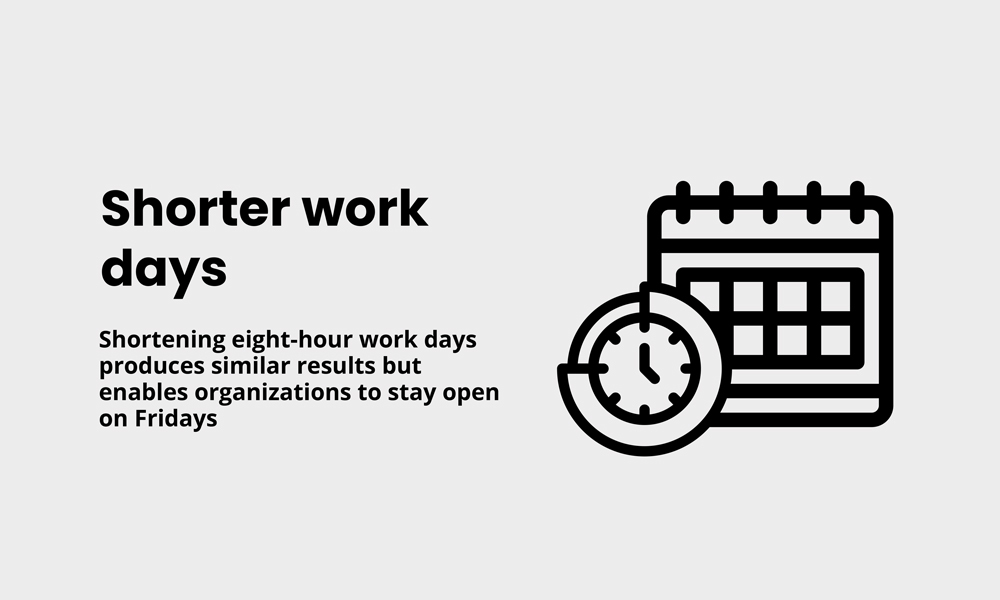The 4 day work week: A critical analysis and 5 alternatives for improving work-life balance
Modern employees are looking for a better work-life balance, which leads to improved health, well-being, and performance inside and outside work. Companies want increased productivity and incentives to attract and retain top talent.
The demand for the 4 day work week is increasing – a study by Qualtrics showed that 92% of employees would support their employer implementing a 4 day work week.[1]
This means that more organizations have to ask themselves if this arrangement suits their company culture, business structure, and industry.
Is the 4 day work week a viable solution to give both employees and companies what they need? Or are there better alternatives?
The same Qualtrics study showed that 47% of workers would prefer a 4 day work week, but 50% only want increased flexibility with their hours.
This post discusses the pros and cons of a 4 day work week, reviews the countries and companies that have experimented with it, and offers five alternatives to a 4 day work week.
Table of contents
- What is the 4 day work week?
- Why are companies and employees interested?
- The 4 day work week: Pros and cons
- The countries and companies trying 4 day work weeks
- The 5 alternatives to the 4 day week for improving work-life balance
- The TestGorilla perspective: Find the work-life balance solution that suits your organization and workforce
- A 4 day work week is just one of many work-life balance options
What is the 4 day work week?
A 4 day work week is a work schedule in which a full-time employee works four days versus the traditional five work days. It’s distinct from a compressed work week, although they are similar.
A 4 day work week, also called a four day workweek, is a shorter work week, usually around 28 to 30 hours of work. The similar but distinct, compressed work week is still the more traditional 35 to 40 hours, just in fewer days. But we’ll talk about this in-depth later on.
Many companies use the terms interchangeably, calling a compressed work week a four day workweek and vice-versa.
So why is the 4 day work week such a hot topic right now? Here are the main elements driving it:
Modern demand for better work-life balance
Challenging the idea that being “at work” means getting work done
The idea that we only have 40-hour work weeks because it’s traditional – the practice is a little over 100 years old
People are starting to question the “usual” work week as the most efficient schedule and seeing a shorter week as the future of work.
Just because you’re clocking in hours doesn’t necessarily mean you’re being productive. However, there are many alternatives to solve this issue, too.
Let’s take a look at why so many organizations are experimenting with this new work arrangement.
Why are companies and employees interested?
The above ideas propel the 4 day work week – but what got the ball rolling?
A lot of factors have combined over the past several years to make a 4 day work week a major trend:
Talent shortages: It’s a laborer’s market, and because of it, more employees are demanding better work-life balance and shorter hours.
The pandemic: The working world changed drastically during the pandemic. Many businesses explored 4 day work weeks during and after the pandemic to reduce the amount of contact employees had.
A modern focus on well-being: Increasingly, more people are prioritizing mental health and well-being. One study found that 68% of HR leaders consider employee well-being a top priority.
The Great Resignation/Reshuffle: When companies struggle to attract and retain talent, the 4 day work week provides a solid offer to potential candidates.
The corporate landscape is constantly changing, and major events are making leaders consider new working arrangements.
Increasingly, companies adopt 4 day work weeks, whether as an experiment or a permanent policy.
The best insights on HR and recruitment, delivered to your inbox.
Biweekly updates. No spam. Unsubscribe any time.
The 4 day work week: Pros and cons
Every arrangement has both advantages and disadvantages, and the 4 day work week is no different.
Employees love the work-life balance, and companies love the improved productivity. But on the other hand, it isn’t possible for every business and role and can be complex to implement.
Let’s take a look at the 4 day work week pros and cons.
The benefits of a four day work week
Many companies say that overwhelming success followed soon after implementing a four-day week.
Benefit | Description |
1. Improved work-life balance | Having a balance of four work days and a three-day weekend gives employees more time to recharge and rejuvenate |
2. Higher productivity | When employees are more rested, they can accomplish more, and many organizations report increased productivity as a result |
3. An attractive recruitment tool | Candidates love the idea of a shorter work week, and many companies are using it as a hiring tool |
4. Reduced expenses and a smaller carbon footprint | The ability to close operations for an extra day helps organizations save on electricity, utilities, and resources |
5. Better time management | A shorter work week can lead to more efficient use of time and meetings |
6. A more diverse and inclusive workplace | A four day work week enables more people to juggle family and work, which is especially useful for parents and people involved in childcare |
Besides work-life balance, higher productivity is one of the biggest benefits for companies with 4 day work weeks.
A study by 4 Day Week found that these working arrangements can substantially impact productivity – 15% of companies said that productivity had significantly increased, 34% said it had slightly increased, and 46% said it stayed the same. Read our guide to learn key employee productivity statistics.
Some companies see increased productivity, but the majority see it as unchanged.
So, a 4 day work week is largely a neutral thing. You can adopt it and see if it’s for you, but you can also achieve many of the benefits from an alternative (more on that below).
The drawbacks of a four day work week
So how about the drawbacks? The benefits of a four day work week are enticing, but nothing’s perfect.
Drawback | Description |
1. Benefits achieved could be short-term | Much of the information we have on 4 day work weeks is from small experiments that lasted a few months, so it’s unknown if benefits are long-term |
2. Not applicable to all positions | Not every role can drop a work day, which affects the inclusivity of your work arrangements |
3. Complex to implement | The effort needed to implement a four day work week and plan coverage successfully can be complicated |
4. Less workplace interaction and communication | Cutting a day out of each week reduces the amount employees socialize and communicate |
5. Issues with customers and suppliers working five day weeks | When your organization operates one less day but your customers and suppliers don’t, scheduling issues can complicate work |
It’s obvious that a 4 day work week isn’t for every company. With that in mind, let’s review the companies and countries with 4 day work weeks and see what successes and issues they’ve faced.
The countries and companies trying 4 day work weeks
Many companies and countries are giving these working arrangements a try, with varying outcomes.
Some try out a four-day week and experience overwhelming success. Others run into issues and go back to the traditional five-day week.
The countries
An entity as large as a country is bound to have problems implementing a 4 day work week and experience different outcomes.
Here are a handful of countries with 4 day work weeks.
United Kingdom
In the UK, four day work weeks received a lot of attention last year.
The largest 4 day work week study ever conducted started in the UK in June 2022. The pilot program involved 72 companies. Each company cut their employees’ hours to 32 per week but maintained the same salaries.
At the halfway point, 86% of the companies said they are likely to continue 4 day work weeks after the experiment, and 88% said the experiment is going well.
Data collection continues, but overall, the UK four day workweek has been successful.
Iceland
Iceland made many headlines after its experiments with these working arrangements.
Most of these read: “Four-Day Week: Overwhelming Success.”
Iceland’s experiment involved 2,500 workers who agreed to work 35-hour weeks with no cut in pay. This experiment spanned a variety of industries, from traditional offices to hospitals.
They saw amazing results:
Better health and wellbeing
Better work-life balance
Productivity and service provision remained unchanged or improved
As a result, 86% of Iceland’s workforce can work shorter weeks. The researchers said they hope their experiment is a blueprint for future trials in other countries.
USA
Utah conducted a 4 day work week experiment for government employees with mixed results. It found fantastic environmental and employee results but poor customer-centric results.
The study found the following benefits:
Saved $1.8m in energy costs
Reduced 6,000 metric tons of carbon dioxide emissions
Reduced an additional 12,000 metric tons of CO2 if employee commuting is included
This experiment lasted from 2007 to 2011, when it ended after too many residents complained about being unable to access services on Fridays.
This story shows that this topic is nuanced and is an excellent example of the 4 day work week’s pros and cons.
Japan
Adopting a 4 day work week is one of the many tactics Japanese employers are trying to combat stress and overwork.
In 2021, the Japanese parliament discussed a proposal enabling workers to opt for 4 day work weeks, hoping to reduce what the Japanese call “karoshi” or “death by overwork.”
Soon thereafter, Japan updated its economic policy guidelines to include recommendations for companies to permit their staff to opt for four day workweeks.
Two of the most notable companies to try it are Microsoft Japan and Panasonic. So far, the Japanese companies that have adopted this practice have seen mainly positive results.
The companies
Many companies have tried the 4 day work week, with varying degrees of success. Depending on a company’s scale, structure, and industry, this working arrangement can be better or worse.
Buffer
Many consider Buffer, a publishing and analytics company, to be a pioneer of 4 day work weeks. In May 2020, Buffer experimented with a 4 day work week with no pay cuts for its team of 89 employees.
Buffer held this trial for one month to give it a try. There were challenges, but most employees preferred it, so it extended this to a six-month trial.
This extension was a success:
Boosted autonomy from 4.3 to 4.7 out of 5
Decreased stress levels from 3.3 to 2.9 out of 5
Established happiness levels of 3.7 out of 5
Buffer still uses the 4 day work week but allows teammates to work five days if it’s easier for them.
Microsoft Japan
Microsoft Japan tried a 4 day work week schedule for five consecutive Fridays in August 2019. The experiment comprised their entire workforce (2,300 employees) with no decrease in pay.
The results of this trial were happier workers and more efficient meetings, among other specifically measured metrics:
40% increase in productivity
23% reduction in electricity costs
59% less paper used
25% less time off taken by workers
Takuya Hirano, the president and chief executive of Microsoft Japan, said that he wants employees to understand that they can achieve the same results in fewer hours.
The company isn’t sure how many of its offices will implement this strategy but continues to do small experiments in other branches.
Bolt
In California, four day work weeks are becoming a bigger topic each day.
San Francisco-based Bolt is one of the many Californian companies getting behind this movement. It started with a trial run of the 4 day work week in 2021, and as of 2022, has transitioned to a permanent model.
The trial alone had excellent results:
94% of employees wanted the four day workweek program to continue
86% of team members were more efficient with their time
87% of managers shared that their team maintained the same productivity and service levels
Bolt still allows work on Fridays, but you have no obligation to log in. There are no scheduled meetings, the Slack channel is quiet, and team members don’t need to respond to any incoming requests.
Yarno
Yarno, a learning software company based in Australia, tried to make the 4 day work week stick, but it didn’t work out as planned.[2]
Despite their best efforts, upper management consistently didn’t get Friday off – they were far too busy trying to get a startup off the ground.
This inconsistency happens across teams, which decreases morale and causes resentment. Some team members get four day weeks, and others don’t.
Lachy Gray, one of the founders, said it seemed ironic because the whole point of this schedule was to inspire, motivate, and energize.
After trying to make this plan work for two years, the company realized the stress and time constraints were too much and returned to five-day work weeks.
The 5 alternatives to the 4 day week for improving work-life balance
It’s true that the 4 day work week can be hit or miss, depending on the experiment’s scale and the company’s structure.
But there are alternatives to this schedule that still improve employee work-life balance and well-being.
Summary
Alternative | Description |
1. Flexible hours and location | Flexible work, such as remote and hybrid work, offers high autonomy for when and where employees complete their work |
2. Unlimited paid time off | A policy where employees take as much time off as they need, as long as it doesn’t affect their work |
3. A 9/80 Work Schedule | A compressed work week divides work into two-week blocks and gives employees every other Friday off |
4. Set responsibilities, not hours | Companies that prioritize employees completing tasks, not how many hours they clock in |
5. Shorter work days | Shortening eight-hour work days produces similar results but enables organizations to stay open on Fridays |
1. Flexible hours and location
Flexible hours and location could be a better alternative to 4 day weeks. There are many ways to offer flexible work, including remote work and hybrid offices.
Flexible work enables employees to maintain more autonomy over when and where they get their work done. It offers many of the same perks as a 4 day work week but enables companies to avoid the issue of closing on Fridays.
This option also still benefits working parents, people with alternative lifestyles, and overworked individuals.
For example, a working parent needs to pick up their kid from school on a Tuesday afternoon, so they opt to finish their work in the evening.
Alia Sinclair, a lifestyle editor and content creator, questions why more employers don’t offer remote work. After finding an onsite-only job ad with zero applicants, Alia says only companies are missing out when they don’t adopt flexible work policies.
2. Unlimited paid time off
Unlimited paid time off, commonly called unlimited PTO, is a policy that enables employees to take as much time as they need off work, as long as it doesn’t impact them or their team.
Some companies love it, and some don’t – you need the right organizational culture to make it work. For instance, employees can’t be in a hustle culture where each day off causes intense guilt.
Within the right culture, this scheme not only works – it thrives. Companies like Netflix and Asana have had amazing success with their unlimited PTO plans. Asana employees claim it’s the most important benefit they have.[3]
It’s also one of our favorite benefits here at TestGorilla. Our unlimited PTO policy is a favorite among employees, and we agree that you need a supportive, positive culture to make it perfect.
3. A 9/80 Work Schedule
A 9/80 work schedule, also called a compressed work week, is similar to a 4 day work week but has distinct differences.
It divides work into two-week slots. In the first week, the employee works an additional hour from Monday to Thursday, then the regular eight on Friday. That totals 44 hours, a little over an average week.
During the second week, the employee works an additional hour from Monday to Thursday again, bringing the time total to 80 for the past two weeks. They now take Friday off.
This schedule carries many of the benefits of a four day work week, such as a better work-life balance, fewer commuting days, and the ability to shut down your organization for a day.
But it doesn’t carry the negative elements, such as availability to your customers. Customers are still able to access services every other Friday.
4. Set responsibilities, not hours
One of our favorite benefits at TestGorilla is having responsibilities, not hours.
What does that mean? It means that the main priorities are completing your work and responsibilities, and little weight is put on the exact hours.
Even companies with contracted hours can have this type of environment. The idea is to emphasize work done, not hours used.
When you focus on responsibilities and not days and hours, you can achieve the same motivation and engagement as a 4 day work week.
This structure is similar to a results-only work environment, where employees work whatever hours they want or need, as long as they produce the desired results.
To read more about this and even more flexible working arrangements, read our blog post on flexible working policies.
5. Shorter work days
Shorter work days, such as working 6 hours a day, have the same purpose as 4 day work weeks but eliminate many of the drawbacks.
Depending on the setup, your employees have 30- to 32-hour workweeks, but you eliminate the issue of closing on Fridays.
From 2015 to 2017, Sweden conducted an experiment with 6-hour days in a healthcare facility. The results were overall positive. Nurses took fewer sick days, reported better well-being, and experienced better work engagement, arranging 85% more activities for patients.
Unfortunately, due to cost concerns, the experiment ended, much to the nurses’ disappointment.
The TestGorilla perspective: Find the work-life balance solution that suits your organization and workforce
So, which solution for work-life balance is right for you?
The approach that works best depends on the specific needs and goals of your company and its employees.
Here at TestGorilla, we work five days a week, with flexible working arrangements and an emphasis on responsibilities over hours.
It’s right for us because we firmly believe in taking ownership of the outcome of our work. When we started TestGorilla, we decided that our dream workplace would be a place that emphasized freedom.
We wanted an organization based on trust – we trust our colleagues to get their work done (and do it amazingly). That’s why we don’t have to worry about counting hours or PTO.
Further, we want the freedom to live our working lives in a way that makes us happy and productive. In an ideal world, some of us might want to take a jog during work hours or get off early to eat lunch with our kids.
We recommend choosing what suits you, your culture, and your business. For example, a tech company might thrive with remote work, but a small retailer might adopt a compressed work week and opt for closing every other Monday.
A 4 day work week is just one of many work-life balance options
We believe this trend of the 4 day work week isn’t for everyone, but it’s still an excellent thing.
Because what’s important is improving work-life balance, avoiding burnout, and having healthier, happier employees – regardless of how you achieve it.
If a 4 day work week isn’t right for your company, opt for one of the alternatives and give remote work, unlimited PTO, or shorter work hours a try.
To further improve your employees’ well-being and work-life balance, check out our HR professional’s guide to setting boundaries at work.
Thinking about giving it a try? Assess your employees’ ability to manage their hours with our Time Management test.
Sources
“The numbers behind four-day work weeks and paid mental health days”. (February 24, 2022). Qualtrics. Retrieved February 9, 2023. https://www.qualtrics.com/blog/four-day-work-week/
Gray, Lachy. (n.d.) “How our 4-day work week turned into a 2 year failed experiment”. Yarno. Retrieved February 9, 2023. https://www.yarno.com.au/blog/4-day-work-week-failure/
“Asana Vacation & Paid Time Off”. (January 28, 2017.) Glassdoor. Retrieved February 9, 2023. https://www.glassdoor.co.uk/Benefits/Asana-Vacation-and-Paid-Time-Off-US-BNFT29\_E567443\_N1.htm
You've scrolled this far
Why not try TestGorilla for free, and see what happens when you put skills first.


